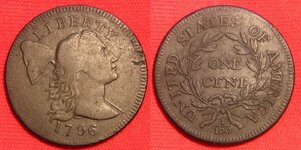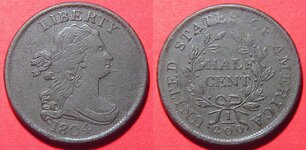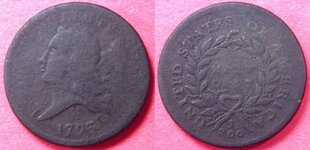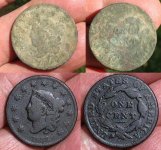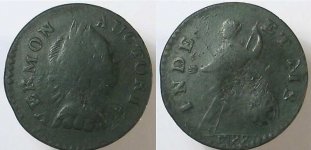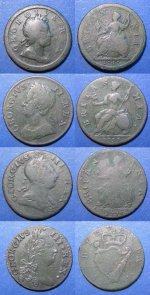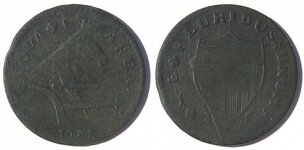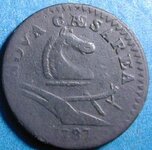Michigan Badger
Gold Member
This cleaning thing is really all about preference (unless you consider selling value).
I prefer to leave that green and a little corrosion on my dug coins. I think it gives them more character. To me, cleaned copper coins look almost pretentious.
Here are some photos of a couple of my more recent finds.
Note the coin on the right was heavily cleaned. The coin on the left is just as dug a couple weeks ago.
Note that the cleaned coin looks grainy (see closeup on date area) and has an almost fake look. That is, the red isn't right for this coin. The tone is off.
The uncleaned coin would do better on ebay even with the nick on the rim. It has a rather nice green patina.
Neither coin is valuable and both have close to the same wear. I'll take the one on the left any day!
Just my opinion.
I prefer to leave that green and a little corrosion on my dug coins. I think it gives them more character. To me, cleaned copper coins look almost pretentious.
Here are some photos of a couple of my more recent finds.
Note the coin on the right was heavily cleaned. The coin on the left is just as dug a couple weeks ago.
Note that the cleaned coin looks grainy (see closeup on date area) and has an almost fake look. That is, the red isn't right for this coin. The tone is off.
The uncleaned coin would do better on ebay even with the nick on the rim. It has a rather nice green patina.
Neither coin is valuable and both have close to the same wear. I'll take the one on the left any day!
Just my opinion.



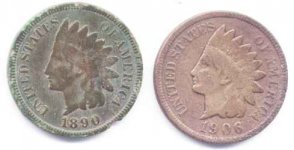
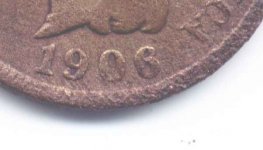
 No details readable, just a mess.
No details readable, just a mess.  After all, they are metal-detecting relics.
After all, they are metal-detecting relics.
